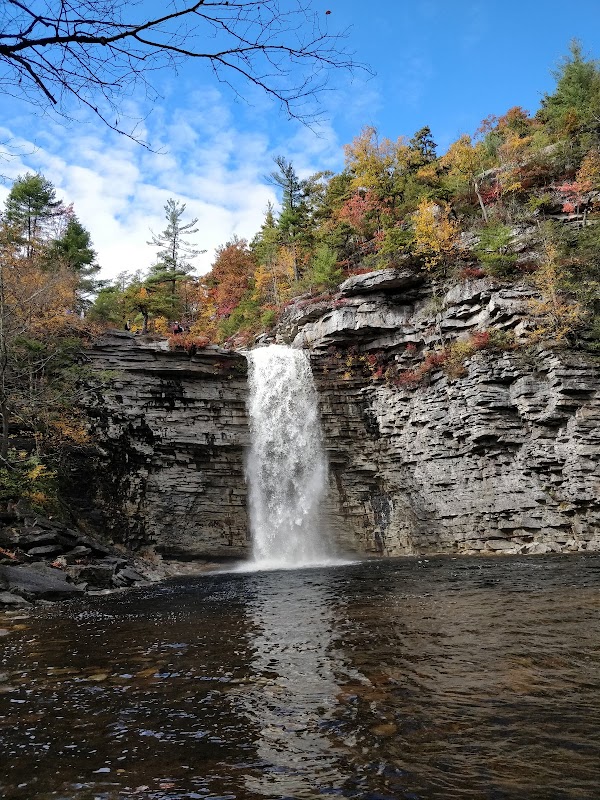
Staten Island Greenbelt Half-Marathon: A Trail Run Through Nature’s Fierce Quiet
Experience the Staten Island Greenbelt Half-Marathon — a 13.1-mile trail run through dense forests and rolling hills less than an hour from Manhattan. This race offers a refreshing break from city streets, blending moderate elevation and varied terrain with vivid natural sights and practical trail advice.
Pack Hydration Wisely
While aid stations appear every 3 miles, carry a lightweight hydration pack to keep your water intake steady on hot or humid days.
Choose Trail-Ready Footwear
Sturdy shoes with good traction will help navigate slippery rocks and leaf-covered roots more safely than racing flats.
Start Early to Beat Heat
Begin the run at dawn to enjoy cooler temperatures and less crowded trails, improving comfort and focus.
Bring Insect Protection
Mosquitoes and ticks can be active during warmer months—use repellents and wear appropriate clothing to reduce bites.
Staten Island Greenbelt Half-Marathon: A Trail Run Through Nature’s Fierce Quiet
The Staten Island Greenbelt Half-Marathon offers a rugged yet accessible adventure just a stone's throw from New York City’s urban pulse. Covering 13.1 miles through one of the borough's largest stretches of protected woodland, this trail run cuts deep into the arboreal domain where roots grip the earth like silent sentinels and streams ripple with quiet defiance. Expect a mix of packed dirt trails, occasional rocky scrambles, and gentle inclines that rise and fall with natural rhythm—over 700 feet of elevation gain, enough to test the legs without demanding technical expertise.
Starting at the historic Blue Heron Park, the course winds through forest paths where oaks and maples dare you to move faster against the cool shade. Around mile six, the terrain opens briefly to sweeping park views that remind runners the city is close but subdued, as if hesitant to disturb the wooded force. Creek crossings test balance and confidence, ledges and roots challenge your stride, and patches of leaf litter quietly shift beneath footfalls, sending subtle warnings to stay alert.
Hydration demands careful planning. Water stations line the route at roughly every 3 miles, but carrying a lightweight hydration pack is advised to maintain steady replenishment, especially during summer months when humidity cloaks the forest in a slow-moving embrace. Trail shoes with modest tread will navigate slippery stones and loose soil; avoid racing flats here—grip counts more than speed.
Though the Greenbelt navigates the complexities of urban wilderness, the trail feels fiercely itself: untamed and demanding respect. Runners benefit from early starts to catch the trails in their freshest state, as afternoon sun sharpens shadows and raises temperature, making each step heavier. The forest’s sounds—bird calls, rustling leaves, distant water—coordinate like a quiet chorus, matching the runner’s pulse with nature’s own cadence.
Preparation means pacing your effort. The hills ascend gradually, but the half-marathon tests consistency over sprint bursts. A moderate level of fitness ensures enjoyment without struggle. Bring layered clothing to adjust as dawn temperature melts into midday warmth. Consider insect repellent and trail sunscreen to face hidden challenges with ease.
The Staten Island Greenbelt Half-Marathon offers a distinct bridge between city life and raw environment. It emphasizes not just endurance, but an attentive connection: a gritty adventure that invites you to move through land that’s stubbornly wild yet generously revealing.
Nearby Trips
All Adventures
Boat Charters
Water Activities
Adventures near Staten Island, New York
Discover the unique and memorable adventures that make Staten Island, New York special.
Frequently Asked Questions
How difficult is the Staten Island Greenbelt Half-Marathon for a casual runner?
The race offers moderate difficulty with 700 feet of elevation gain spread out across forest trails. Casual runners with some trail experience should find it manageable by pacing themselves and staying aware of uneven terrain.
Are there water stations on the course?
Yes, water stations are placed approximately every 3 miles, but it’s recommended to carry your own hydration to stay fully supplied, especially in warmer months.
What kind of wildlife might I see during the run?
Runners often encounter white-tailed deer, gray squirrels, and a variety of songbirds. Early morning runs increase chances of spotting shy creatures like foxes or barred owls.
Is the course marked for safety and navigation?
The half-marathon course is well-marked with signs and volunteers stationed along the route. However, staying attentive to trail markers is essential as nature can obscure some markings.
Are there any historical landmarks along the route?
The Greenbelt traverses areas historically used by early Staten Island settlers and later preserved as natural refuge, with occasional stone remnants and old foundations visible near the Blue Heron Park section.
What should I do in case of sudden weather changes?
Carry a compact rain jacket or windbreaker and check forecasts before starting. On sudden storms, seek shelter at designated safe spots near the start or finish zone.
Recommended Gear
Trail Running Shoes
Provide traction and support on varying surfaces like rocky paths and slick leaves.
Hydration Pack or Belt
Keeps fluids within easy reach to avoid dehydration, especially in warm and humid weather.
Lightweight Layered Clothing
Allows quick temperature adjustments as mornings start cool and afternoons warm — essential for comfort.
Insect Repellent
Protects against ticks and mosquitoes common on the forest floor during warmer months.
Local Insights
Hidden Gems
- "High Rock Park lookout points offer quiet panoramic views rarely crowded."
- "Trailing off the main route, the Susquehanna Trail features unique wetland ecosystems."
Wildlife
- "Eastern box turtles patrol the forest floor in early summer."
- "River otters occasionally appear near stream crossings."
History
"The Greenbelt was established in the 1970s to protect Staten Island’s remaining natural habitats, saving significant forest patches from urban development."
